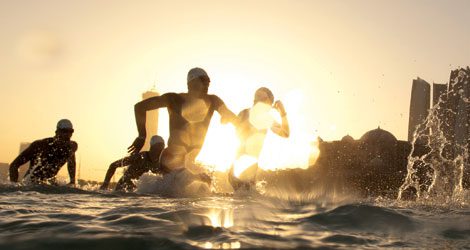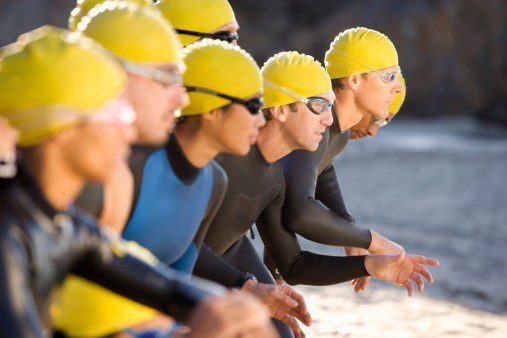Triathlon’s Three R’s
Forward progress during the off-season

To avoid burnout this off-season, it is important to give your body time to recover, recharge and refocus. This may look a bit different for everyone, but surging back into training after a long race season is a mistake. In the 2018 November/December issue of Triathlon Magazine Canada, Melanie McQuaid shares five ways to improving this off-season while still taking an off-season break.

- Mobility: Inadequate mobility creates inefficient movement patterns. Improving sport-specific technique starts with addressing any restricted mobility in the body. Whether the limitation is in the shoulders (swimming), hips (running and cycling) or ankles (running), a focus on mobility improves technique and injury-resistance. Flexibility is a component of mobility, referring to your muscle’s ability to stretch, but mobility is a broader term referring to range of motion. This means a focus on mobility is not necessarily a focus on flexibility. There is little debate that inadequate range of motion will reduce athletic performance, whereas stiff and inflexible muscles may not. Building a mobility routine that ensures you have at least the minimum required range of motion is key to unlocking athletic potential and good technique.
- Agility: Agility refers to balance, coordination, speed and reflexes. This training of your nervous system focuses on improving motor patterns in the body. Xterra racing requires much more agility than a full-distance race, but some work will improve performance and injury-resistance for athletes in all triathlon disciplines. The offseason is a great time to work on agility because a fresh nervous system allows for quality agility work. Agility work does not have to be a specific workout in the gym – team sports like hockey, soccer, squash and competitive dodgeball can help. This type of training can also be a fun off-season social session.
- Strength Work: After an initial period of rest, progressive strength work creates sport-specific improvements. Inadequate hip and glute strength is the leading cause of running injuries. Spending time eliminating functional weakness is important, particularly if an athlete is prone to injury. A consistent program of overall strength work is important for all athletes, but especially those over 30 years old. A decline in skeletal muscle starts at 30. This atrophy accelerates in athletes over 50, and there is a steeper decline in male athletes versus female. Therefore, a consistent strength program is crucial to maintain lean muscle in older athletes.
- Habits: It takes 30 days to make a habit stick. Committing to an improved routine in the offseason by incorporating healthy habits will start the new season off on the right note. If any food habit changes are necessary, they are best incorporated during the off-season. Changes in diet are safer and more effective outside of a heavy training block, because negative energy balance is a risk factor for injury. Making diet changes outside of a key training period ensures the athlete doesn’t create negative energy balance by under-fueling sessions. Other habits to consider include morning mobility routines, daily affirmations, weekly food prep sessions, evening foam roll sessions or setting times for training log entries. Choose one thing that can make an impact and stick to it for 30 days. Don’t try to overhaul everything at once. Small, permanent changes have a larger impact than major temporary changes.
- Mental Health: Having a healthy attitude toward sport makes the experience more fulfilling. The ups and downs of sport performance are what makes success so rewarding. Take time to identify: Who are the people who surround and support you; What is important to you and the path you want to follow; and Why that path is valuable and the goals and meaning behind it. Knowing the answers to these questions creates sharp focus and helps define goals for the coming season. “Who” creates safety and support for weathering adversity; “what” helps define the journey; and “why” makes the process meaningful. Taking time to answer these questions helps with goal-setting and managing perspective for athletes. While the off-season is time to take a step back from rigorous swimming, biking and running, you can still create a foundation of improvement. Focusing on mobility, agility, strength, habits and mental health is a great way to start the season off on the right foot.


